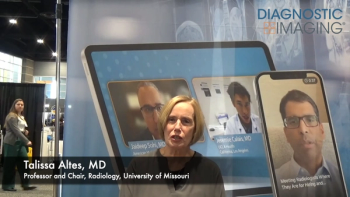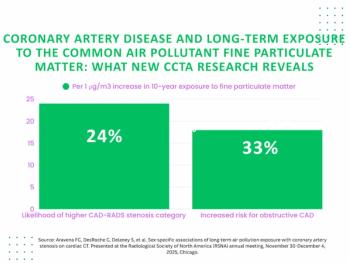
Rates of Critical Discrepancies for On-call Resident Radiologists
On-call resident radiologists' discrepancy rates, according to a retrospective review.
Discrepancy rates among on-call residents of various training levels involve extremely low rates of critical discrepancies and are comparable to those published previously, according to a study published in the
Researchers from the Mallinckrodt Institute of Radiology, Washington University School of Medicine, in St Louis, MO, sought to report discrepancy rates for examinations interpreted by on-call residents overall and by resident training level over a two-year period. They also described a novel discrepancy classification system based on patient location and severity that aimed to facilitate recording of discrepancy data, ensure proper communication of report changes, and allow the radiology department to assume responsibility for contacting discharged patients with non-time-dependent results.
The report retrospectively performed a review for total number of examinations interpreted, discrepancy rates, resident training level, and discrepancy categories. Most common diagnoses and means of results communication for discharged patients were also recorded. The on-call residents interpreted plain film, CT, fluoroscopy, nuclear medicine studies, and ultrasound. Magnetic resonance images and hyperacute stroke CT angiograms are read by fellows and staff from home after hours. Subspecialists were available to review from home on an as-needed basis and attending reviews of the studies are performed face-to-face at the end of the shift.
The results showed that the radiology residents interpreted 153,420 examinations after hours and there were 2,169 discrepancies, an overall discrepancy rate of 1.4%.
Inpatient discrepancies were slightly higher than emergency department patients, with a 1.88% versus a 1.35% discrepancy rate, respectively.
The researchers found the rate of critical discrepancies was extremely low, only 10 out of 153,420 or 0.007%. A total of 502 patients (23.2% of all discrepancies) were discharged at the time their discrepancy was identified:
• 60% had non-time-dependent discrepancies communicated by radiologists
• 32.4% had results addended telephoned to a primary care provider
• 43.4% had addended results telephoned to the patient
• 24.2% required a registered letter with the results
• 8% of patients with non-time-dependent findings were lost to follow-up
“Our resident discrepancy rates were comparable to those published previously, with extremely low rates of critical discrepancies,” the researchers concluded. “Radiologists assumed responsibility for contacting the majority of discharged patients with discrepant results, a minority of whom were lost to follow-up.”
Newsletter
Stay at the forefront of radiology with the Diagnostic Imaging newsletter, delivering the latest news, clinical insights, and imaging advancements for today’s radiologists.




























